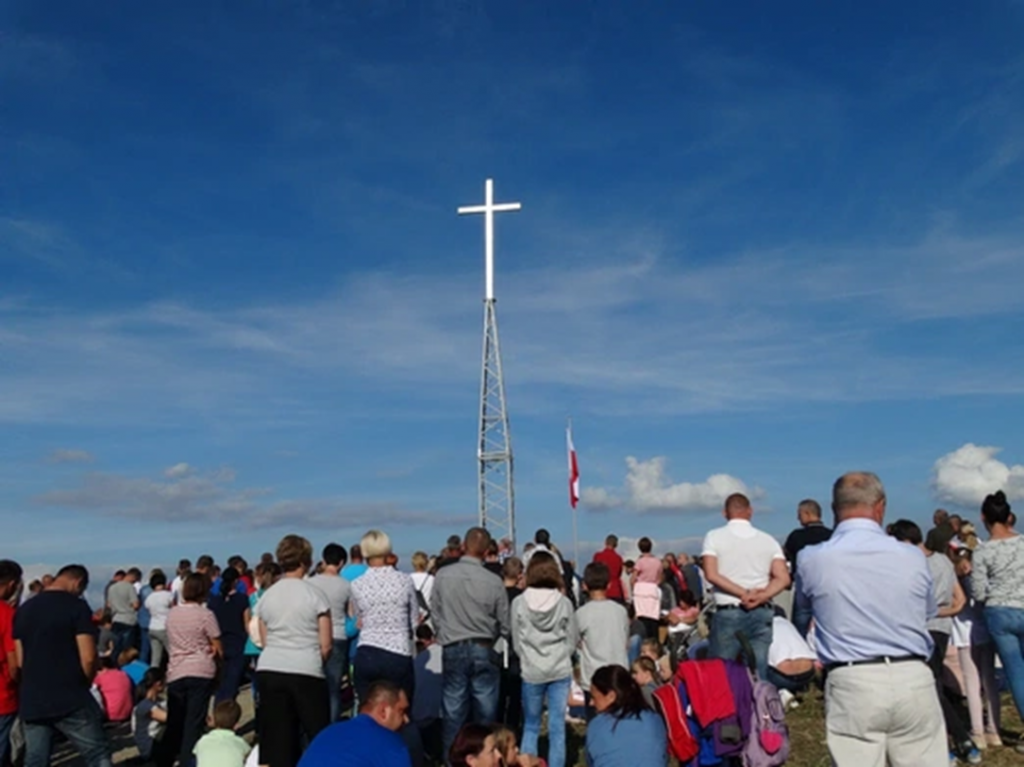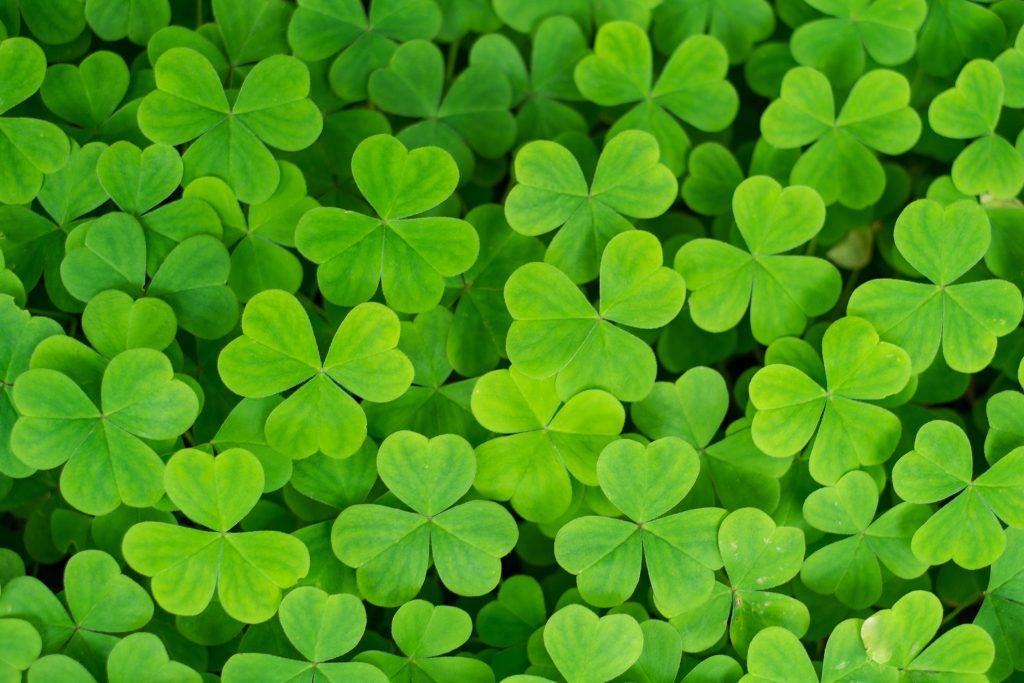
The sign of the Holy Cross
Is the cross of Christ deeply engraved in my heart? How do I make this sign of my faith? Am I not ashamed of the sign of the cross in public places?
Let’s try to understand some individual parts of Holy Mass.
By making the sign of the cross, we name the three persons of God: the Father, the Son and the Holy Spirit. The Holy Mass is therefore a revealing of the Holy Trinity.
For centuries, the Holy Mass began with the sign of the cross and the words: “In the name of the Father, and of the Son, and of the Holy Spirit. Amen”. But the celebrant alone and quietly spoke these words. That was until sixty years ago.
The words spoken with the sign of the holy cross and made with the hand has a rich content. Participation in the Holy Mass begins with the sacrament of baptism. Baptism is administered “in the name of the Father. . .”. The sign of the cross made with holy water at the entrance to the church reminds us of this truth. A Christian is born from water and the Holy Spirit and grows spiritually by receiving the Bread of Life. Only a baptized person can fully participate in the Holy Mass. Poor are the people who do not participate in the Eucharist and deprive themselves of the opportunity to develop the seed of faith received at baptism. Unfortunately, we know that there are more and more such people around us, even in our families.
“In the name of the Father” – what does it mean? Well, the name in the biblical language means “presence”, that is, when we answer: “Amen”, after the words of the priest, we express our faith in the presence of God in the liturgical assembly and that in this faith the Eucharist is celebrated. It is presided over by the priest, but not in his own name, but in the name of Jesus Christ, who called him and gave him the power to celebrate the memorial of His death and resurrection.

By making the sign of the cross, we name three persons of God: the Father, the Son and the Holy Spirit. The Holy Mass is therefore a manifestation of the Most Holy Trinity. In order to emphasize this truth, the sanctuary was built in the shape of a cloverleaf in Romanesque churches. The clover leaf as a symbol of the Holy Trinity comes from St. Patrick. Well, he, preaching the faith in Ireland, on the example of a shamrock leaf, which consists of three parts – a four-leaf is hard to find – explained to simple people the mystery of the Holy Trinity: One God in three Persons. The sanctuary was called the “house” of the Holy Trinity; from the Trinity life that flows to the altar.
Let’s go back in history. It was the year 312. Constantine was preparing to fight Maxentius for the imperial throne in Rome. At night he had a dream in which he saw a cross in the sky with the inscription: “In this sign you will conquer!”. Strongly impressed by this vision, he ordered crosses to be placed on the shields of his soldiers. The larger army of Maxentius was defeated at the Milivian Bridge near Rome. This victory was for him proof of the special power of the cross of Christ. Constantine converts to the Christian faith and grants its followers full rights to profess it. He is baptized on his deathbed. Also, his mother, Helena, accepts faith in Christ and goes to the Holy Land in search of the cross on which Christ gave his life. Finding the relics of the cross, she brings them to Rome and places them in a church specially dedicated for this purpose.
The first Christians, making the sign of the cross, reminded themselves that they were God’s property. For this sign they gave their lives, often with a bloody cross cut by their persecutors on their chests. Even today, Christians give their lives for their faith; we know what is happening in the Middle East, India, Nigeria or Pakistan. It is reported that in the twentieth century more Christians were killed for their faith than in the previous nineteen centuries of Christianity.
Now let’s consider: Is the cross of Christ deeply engraved in my heart? How do I make this sign of my faith? Am I not ashamed of the sign of the cross in public places?
The removal of crosses from public places has become common in recent years. Even from workers dealing with the public. Before the so-called Enlightenment and Modernist thinking the cross was almost omnipresent, but now, even in Catholic countries the cross has been removed. So why? Whoever does this, are they ashamed of the cross?; or are they afraid of something? And yet his or her great-grandfather, in front of a roadside cross, took off his soldier’s cap, knelt down and drew strength to go on and fight for his Homeland. It was their grandmother who enfolded the whole family in her rosary, and the rosary begins with the sign of the cross. It was their mother who hugged the pierced feet of Jesus hanging on the cross and was able to raise several children, even experiencing poverty. Having such a great-grandfather, having such a grandmother and having such a mother, he or she pulls the cross off the wall today. Is he ashamed of it, or is he afraid of something?
I will end with the words of C.K. Norwid from the poem “Moment”:
“We don’t know anything, all our lives
We want to know something, but we don’t know anything.
[…]
I play with the shadow, and before the shadow we tremble;
[…]
Only one cross, stretching out his hands,
Old people after old acquaintance, He welcomes
Youth He blesses – and cares for the worn-out
From the clouds he inclines – reading the eyes of children.
“We know nothing”; we gain wisdom – only – by embracing the cross!
The prayer of St. John Henry Newman (after Holy Communion):
“I adore You, O my Lord God, with the deepest respect for Your passion and crucifixion, offered for our sins. You experienced unspeakable sufferings in Your sinless soul. […] And when your body was deformed by tortures, you hung on the Cross, naked, like a spectacle for all watching your convulsions and agony. What does it mean, mighty God?! What is this depth that we cannot penetrate?! My God, I know well that you were able to save us even at your word, without any suffering; but your choice was to redeem us with your blood. I look at You, Victim raised above Calvary. […] I believe and recognise that only You alone could make reparation worthy of all reward and glory, because Your Divine nature gave priceless value through Your suffering. […] Such a Sacrifice could not be forgotten. […] Yes, my Lord, although you have left this world, you offer yourself daily in the adoring gift of the Eucharist. […] Every day you offer yourself in humility. […] My Lord, I give myself to You in return as a sacrifice of thanksgiving. Thou hast died for me, and in return I make myself Thine”.
(J.H. Newman, “One Step Closer… Meditations”, pp. 210-211).